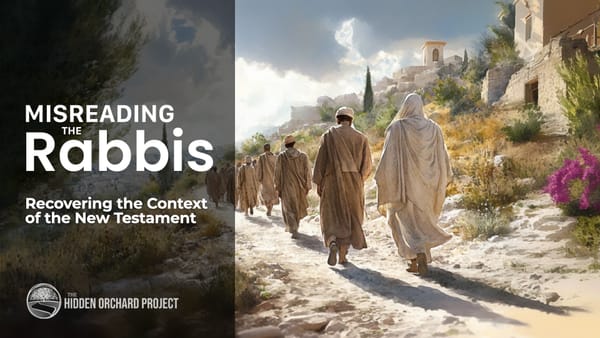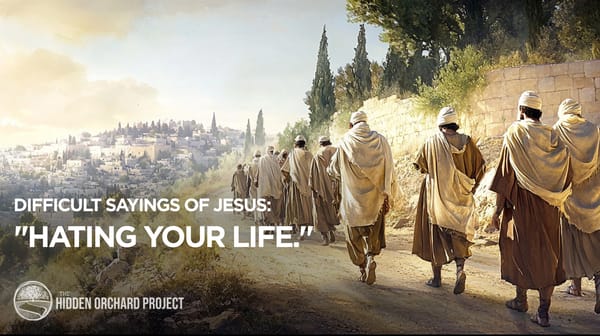Who Killed Jesus?
There is a perennial tension in the Jewish community that emerges around the time of Easter. In past centuries, the yearly retelling of the "Passion" would spark fiery pogroms and blood libels throughout Europe, as Christians sought to avenge the death of Jesus,
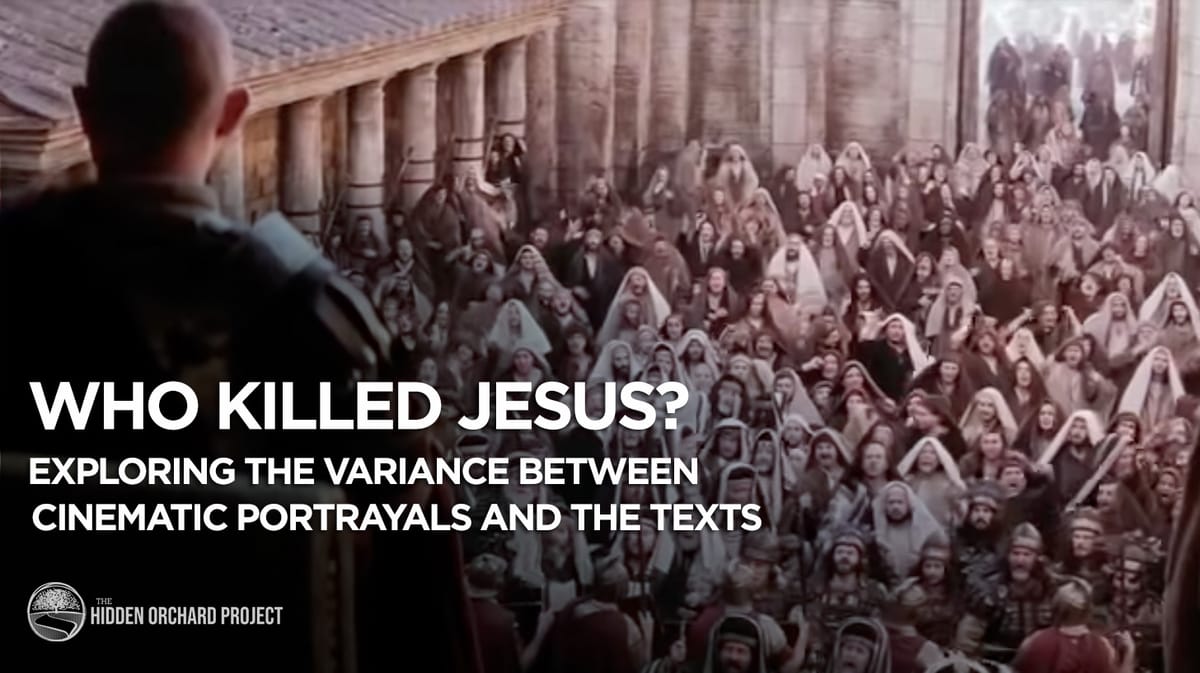
There is a perennial tension in the Jewish community that emerges around the time of Easter. In past centuries, the yearly retelling of the "Passion" would spark fiery pogroms and blood libels throughout Europe. Many Christians sought to avenge the death of Jesus, whom they were convinced had been killed by the Jewish people. Not some, but the people as a whole.
This steady theological undercurrent across Europe would be the wellspring that Adolph Hitler would leverage to bring the Third Reich to power.
Having spent time in both the Catholic and Protestant churches, the idea that the "Jews killed Jesus" seemed to be the accepted narrative of the Easter service. Through common mistranslations of the word "Jew"¹, well-worn replacement theology traditions, and perhaps some unconscious biases, this idea was—and still is—reinforced every year. In this article, I hope to shed some light on this topic.
The Passion of the Christ
Years ago, I recall the aftermath of Mel Gibson's "Passion of the Christ" movie. As a kind of modern "Passion play," a Braveheart-meets-the-New-Testament, theatre-goers left with a renewed anger towards Jews. Gibson, who funded, directed, and co-wrote the movie, was accused by the Anti-Defamation League of portraying the Jewish people through various stereotypes. Commenting on his biases and creative liberties, they warned:
We fear the consequences of this film. There will be many people who are not so familiar with the Gospel narratives and might believe that everything they see on the film derives directly from the New Testament. Much of what is on the screen is Mr. Gibson's artistic vision and finds its genesis in extra-Biblical sources. We are also concerned about those who already are disposed unfavorably toward Jews and will use this to fan the flames of hatred.²
Despite the inaccuracies, this movie remains a yearly tradition for many. So popular still, in fact, the "Passion of the Christ 2"³ is reportedly in the works at the time of this writing.
Who Is Responsible?
We should begin by asking, who were the people shouting "crucify him!" in the Gospel accounts? Was it the Jewish people as a whole, or was it a smaller subset?
Many theatrical portrayals depict masses of Jewish people, numbering in the thousands. However, all of the Gospels identify this group as the Chief priests, officers, and their allies. (Luke 23:10; John 19:6; Mark 15:1; 13; Matthew 27:12; 20).
In reality, this group would have been much smaller; likely a combination of [the party generally known as] the Sadducees, the Boethusians, the Herodians, and others with whom these groups conspired. Some were Jewish, some may not have been - but like corrupt government officials operating on their own behalf - they sought to protect their own interests at any cost.
It is important to be aware that many of the Pharisees, the Dead Sea community, the Talmudic Sages, as well as the Apostles, were in agreement that these leading bodies were unfit, if not thoroughly corrupted. The Rabbinic writings include many scattered accounts of their transgressions and divisiveness.
Incidentally, Jesus was a threat to these leaders precisely because he had large crowds of Jewish followers! Augustus Neander, an early church historian, stated that 'over 1 million Jews in Israel were followers of Jesus in the first century⁵.
“And the chief priests and the scribes were seeking how to put him to death, for they feared the people.”
- Luke 22:2
It was apparent to Jesus' opponents that killing him [openly] would incite a riot and a crushing Roman response. This fact made it easy to convince local Roman leaders of his danger to them as well, for, an insurrection in Israel would bring a response from Caesar.
"the chief priests and the Pharisees gathered the council and said, “What are we to do? For this man performs many signs. If we let him go on like this, everyone will believe in him, and the Romans will come and take away both our place and our nation.” But one of them, Caiaphas, who was high priest that year, said to them, “You know nothing at all. Nor do you understand that it is better for you that one man should die for the people, not that the whole nation should perish.”
- John 11:47-50
It would be this same group who arrested Jesus, subjected him to a false trial—one that violated Jewish law—and ensured that Pilate carried out his execution as a political threat⁶. Therefore, we should understand the New Testament itself does not put the blame on the Jewish people as a whole.
Capital Punishment in Jewish Law
Jewish law required judges to go to great lengths to avoid handing down the death penalty⁷. This included various provisions to release the accused, even at the moment of execution.
Talmud tractate Sanhedrin 32-33 details the criteria necessary for capital cases. Of the many that were violated, Jewish law required that;
• Capital cases were to be tried by 23 'fit' judges
• Cases began with the aim of trying to acquit the accused
• As cases could last 2 days, they were not held on the eve of Shabbat or festivals
• Cases were not to be held at night
The so-called 'trial' depicted in the Gospels violated Jewish law to the degree that warrants a study of its own. Desperate, these elites acted under the cover of night, sidestepping Jewish law, to preserve their own interests.
The Pavement
Now that we have a better idea of the who, the where is also important.
“... when Pilate heard these words, he brought Jesus out and sat down on the judgment seat at a place called The Stone Pavement, and in Aramaic Gabbatha.”
- John 19:13
Archeologists and scholars have become more confident that the trial took place in Herod's Palace, also known as the "Praetorium", on the west side of the old city. This changes the setting to a more intimate location.
Commonly, readers envision the setting for this judgment as it is often depicted [in movies] as the wide open, spacious Temple courts in Jerusalem, which could see more than 250,000 people or more during Passover. This gives the impression that the Jewish people—as a whole—sought to have Jesus crucified. In contrast, the Gospels record the vast number of Jews who welcomed and followed Jesus that week.
Instead, we should view this location as a much smaller venue, one that would hold a relatively small number of Sadducean leaders and their cronies, Roman guards, and servants.
In his work, The Trial of Jesus, author Shimon G. explains why it’s most likely the praetorium was located in Herod’s palace:
There can be no doubt that on the occasions when Pilate stayed in Jerusalem, particularly during the Jewish festivities, he took up residence at Herod’s old palace situated on the west side of the city, also known as the praetorium. The word praetorium might refer to a palace or a judicial military seat, but it is likely that in Jerusalem it referred to the entire palace compound, which on the north included palatial buildings used for residential purposes and on the south, military barracks.⁷
Another dimension worth considering, it is not likely the Torah-observant Jewish people - who at this time were guarding their state of ritual purity - would enter into the building of pagan Romans. Those who did, in order to expedite their agenda, seem unconcerned with Jewish law, even going so far as to state:
"... We have no king but Caesar" - John 19:15
In conclusion, we should always be careful about the impressions we receive from media and those who present artistic liberties as truth. If the conclusion remains that the Jewish people as a whole are to blame for Jesus's crucifixion, then we unwittingly advance a grave error.
Want to Learn More?
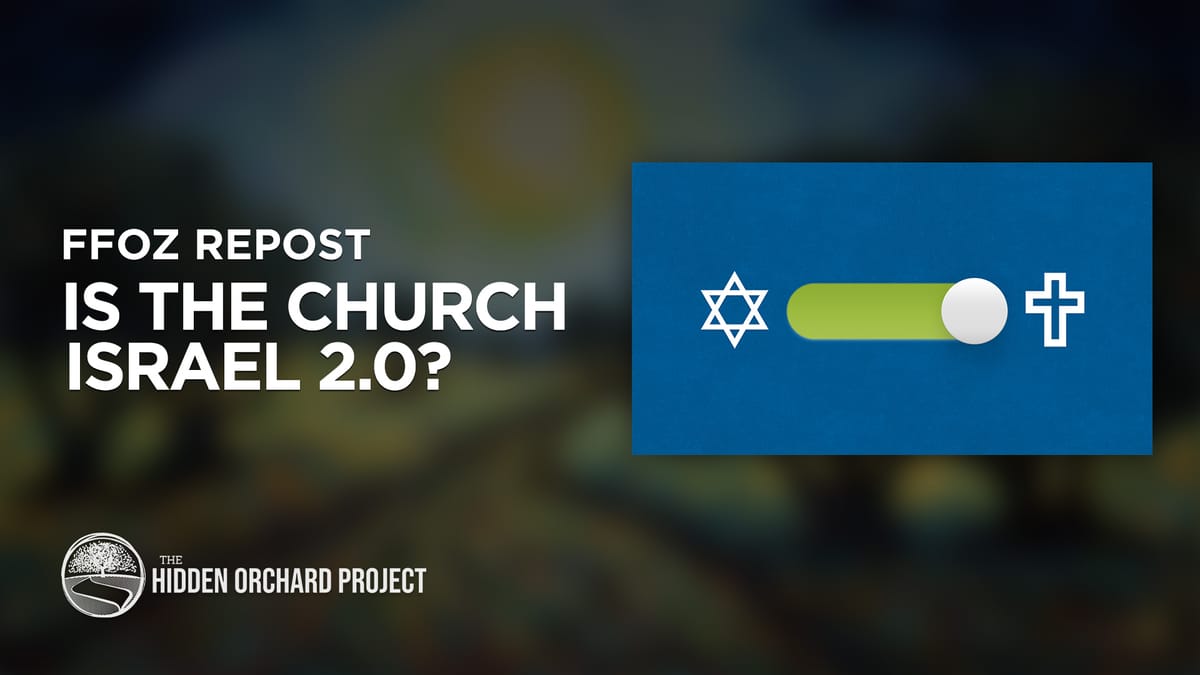
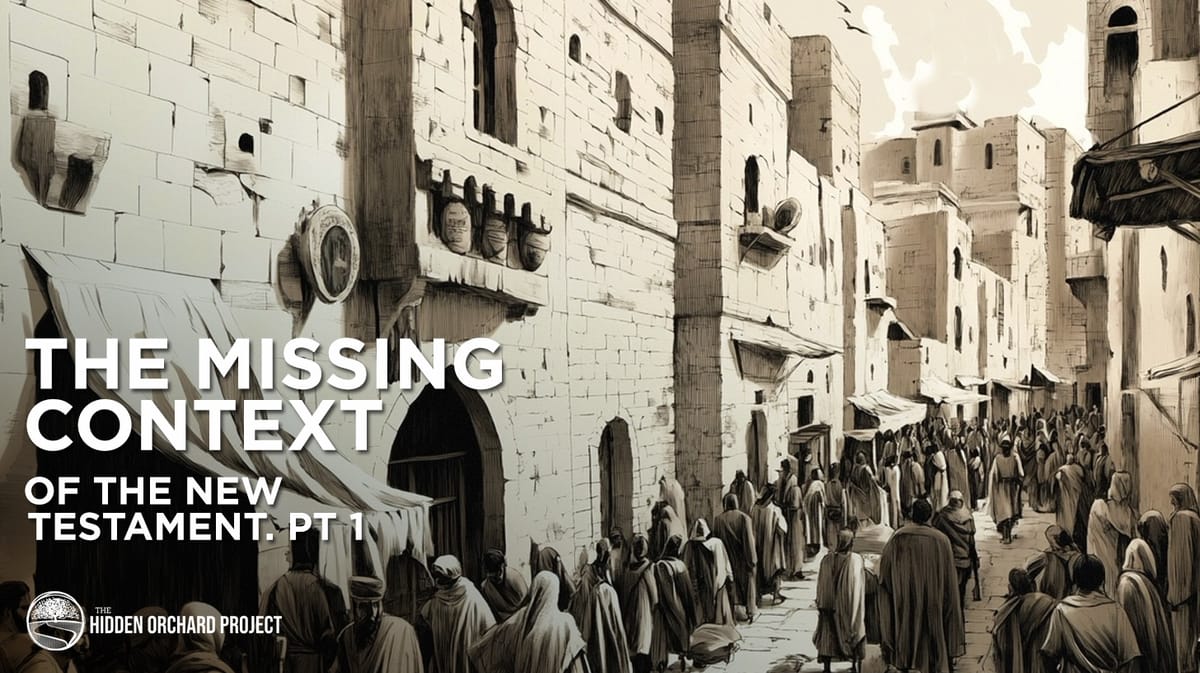
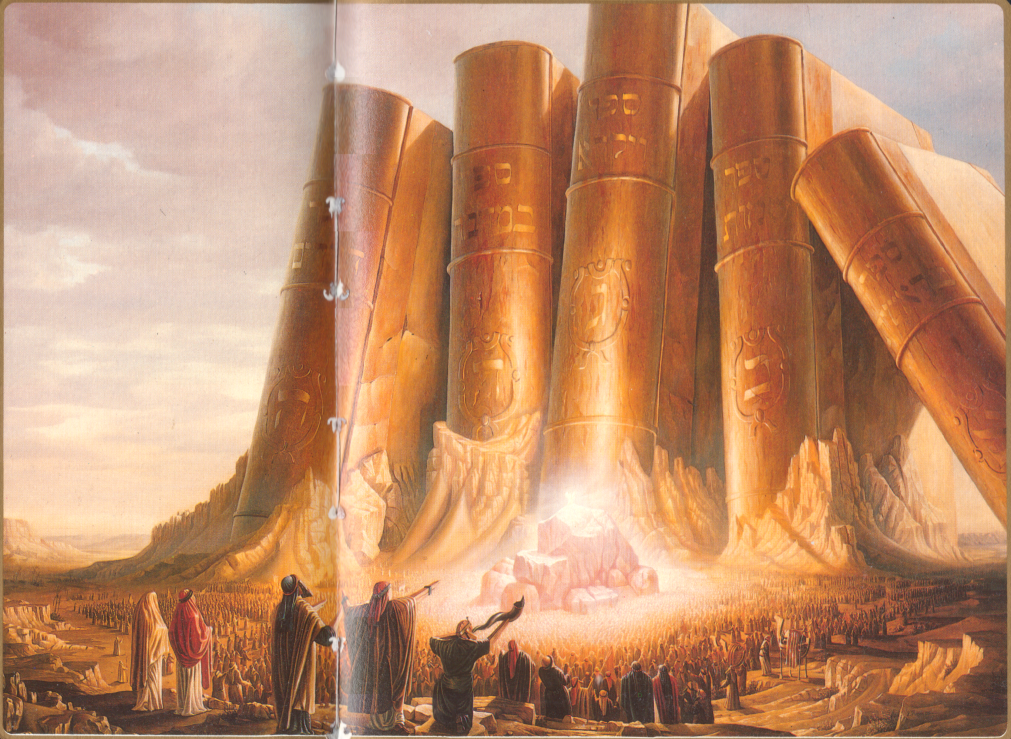
Notes:
¹ https://www.thehiddenorchard.com/antisemitism-in-the-new-testament/
² https://www.adl.org/resources/news/adl-and-mel-gibsons-passion-christ
³ Passion of the Christ 2 https://screenrant.com/passion-christ-resurrection-movie-news-updates/
⁴ The Distortion. 2,000 years of Misrepresenting... https://a.co/d/dSwKbvW
⁵ "The Distortion." pg. 93
⁶ “Then Jesus said to the chief priests and officers of the temple and elders, who had come out against him, “Have you come out as against a robber, with swords and clubs?” - Luke 22:52
⁷ https://www.academia.edu/en/22894409/The_Trial_of_Jesus_at_the_Jerusalem_Praetorium_New_Archaeological_Evidence
https://www.biblicalarchaeology.org/daily/news/herods-jerusalem-palace-trial-of-jesus/




